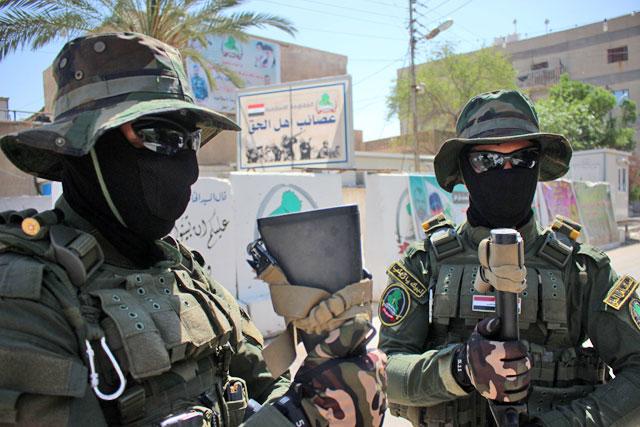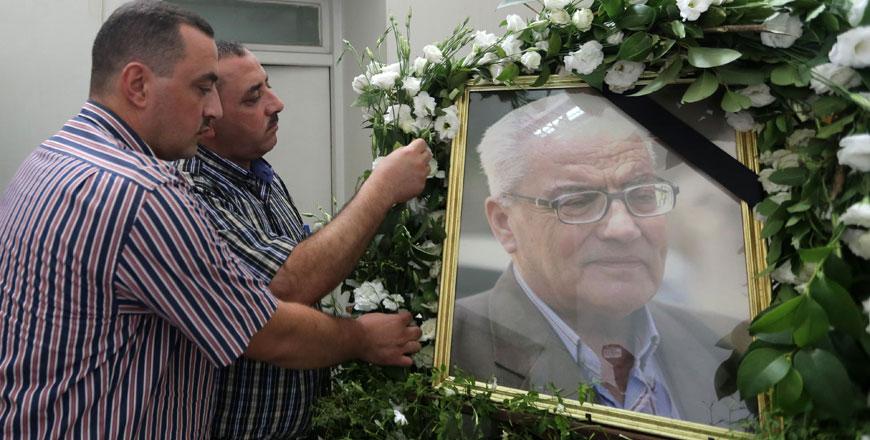You are here
Daesh takes gas fields after Palmyra civilian deaths — monitor
By AFP - May 18,2015 - Last updated at May 18,2015
BEIRUT — The Daesh jihadist group seized two gas fields Monday northeast of Syria's ancient Palmyra, a day after firing rockets into the city and killing five people, a monitor said.
The Al Hail and Arak gas fields, 40 and 25 kilometres respectively from Palmyra, were vital for the regime's generation of electricity for areas under its control, the Syrian Observatory for Human Rights said.
Fierce clashes have rocked Palmyra's outskirts since Daesh launched an offensive on May 13 to capture the 2,000-year-old world heritage site nicknamed "the pearl of the desert".
Since then, at least 364 people, including combatants from both sides and 62 civilians, have been killed in the battle for the ancient city.
On Saturday, the jihadists seized most of the city's north, but were pushed out by government troops less than 24 hours later.
"The military situation is under control in the city, but the clashes are ongoing north and northwest of it," said Talal Barazi, the governor of Homs province where Palmyra is located.
"At least five civilians, including two children, were killed Sunday night when Daesh fired rockets on numerous neighbourhoods in Tadmur," the observatory said, using the Arabic name for the city.
"Everyone is holed up at home," Khalil Al Hariri, head of the local museum, told AFP by phone from Palmyra.
"People are afraid of going out."
According to Syrian antiquities director Mamoun Abdulkarim, two rockets on Sunday hit the garden of Palmyra's museum which housed statues, sarcophagi and other well-preserved artefacts, without causing any damage.
"The museum was emptied a few weeks ago, and the main objects were transferred to secret safe spaces," he told AFP.
Nevertheless, "there are still pieces that we could not transport because they are fixed on the wall", Abdulkarim added.
The antiquities director, who had called on the international community to prevent a "catastrophe" at Palmyra, said he remained worried about the "ancient city, especially its sculpted sarcophagi".
Since Saturday, the jihadists have been firmly entrenched 1km from Palmyra's archaeological treasures, including colonnaded alleys and elaborate tombs southwest of the city.
Fears that Daesh would destroy the beautiful artefacts spurred urgent calls from UNESCO for international action.
Northeast of the city, Daesh seized the Al Hail and Arak gas fields after attacking the facilities on Sunday. The jihadists consolidated their control by Monday, with at least 56 regime forces killed in the two-day assault.
Al Hail is the largest gas field in Homs province after the massive Shaer field, which remains under regime control but has been attacked by Daesh before.
The Homs governor confirmed Daesh had attacked the fields, but denied reports they had fallen.
"We cannot say they are in control of these fields, as Daesh is incapable of holding one position for a long time," Barazi said.
In the northwest, rebels and Al Qaeda's Syria affiliate Al Nusra Front also edged closer to the Al Mastumah military compound, one of the regime's last military bases in Idlib province.
Related Articles
Shiite militias converged on Ramadi Monday to try to recapture it from jihadists who dealt the Iraqi government a stinging blow by overrunning the city in a deadly three-day blitz.
DAMASCUS — Daesh militants mutilated the body of a famed Syrian archaeologist after killing him execution-style in the ancient city of Palmy
Syrian troops pushed Daesh group jihadists back from the ancient city of Palmyra on Sunday, easing fears over the world heritage site, after fighting that left hundreds dead.














